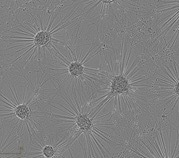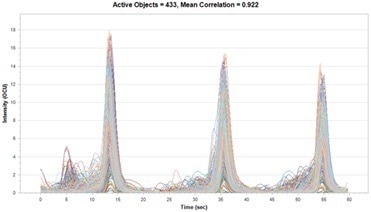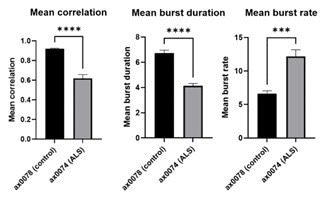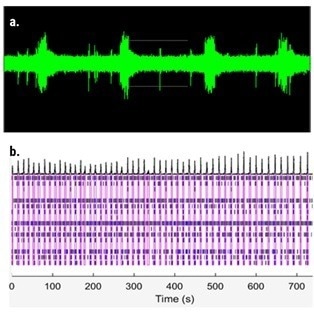axoCells™ Human iPSC-Derived Motor Neurons, male donor, ≥2 million cells
Motor neurons innervate muscle cells to control various voluntary and involuntary movements. The progressive degeneration of motor neurons is the core of neuromuscular disorders, such as ALS. AxoCells Motor Neurons by Axol Bioscience are commonly paired with muscle cells (axoCells Myotubes) to power sophisticated in vitro models of ALS.
- Derived from human iPSCs
- Assay-ready in just 10 days
- Expression of the key markers including HB9, MAP2, LIM3 and ChAT2
- Designed for advanced in vitro model formats including co-culture and organ-on-chip platforms
Phenotypic characterization
axoCells Motor Neurons have undergone extensive phenotypic characterization, including morphology and immunocytochemistry-based expression of important cell markers.

Figure 1. Phase contrast images of axoCells Motor Neurons matured from progenitors over 21 days. Image Credit: Axol Bioscience Ltd

Figure 2. Immunocytochemistry of day 21 mature axoCells Motor Neurons demonstrating presence of key markers (ChAT and TUJ1). Images captured on a Leica microscope x20 magnification. Image Credit: Axol Bioscience Ltd
Functional relevance
Using various assays, such as electrophysiology and calcium imaging, Axol Bioscience has confirmed the functional relevance of axoCells Motor Neurons in disease phenotypes.

Figure 3. The firing pattern of axoCells Motor Neurons at day 21, transfected with NeuroBurst (calcium-sensitive lentivirus driven off the synapsin reporter) to pick up spontaneous neuronal activity on an IncuCyte. This demonstrates regular, synchronized firing with a mean correlation of 0.92. Potential parameters measured include mean correlation, burst rate, burst duration, and burst strength. Image Credit: Axol Bioscience Ltd

Figure 4. axoCells healthy control and ALS-derived motor neurons (C9ORF72) were matured for 21 days and transfected with Neuroburst Orange to look at spontaneous neuronal activity on the IncuCyte S3. Healthy motor neurons show regular synchronous firing compared to ALS, which fires more frequently, for a shorter duration, and in a less synchronized manner (shown by burst duration and rate). N = 3, ***p < 0.001, ****p < 0.0001. Image Credit: Axol Bioscience Ltd
Functional QC
As the next stage of the quality chain, Axol has been investigating functional QC (fQC), which involves evaluating the effectiveness and performance of cells in assays that are relevant to biology.
This new standard will improve translational power in sophisticated in vitro models and boost confidence in the cells' physiological relevance.
Drug discovery for ALS may be aided by sophisticated in vitro neuromuscular models powered by axoCells Motor Neurons. Assays for fQC will use multi-electrode arrays to measure the appearance of synchronized burst firing, indicating a functional network's formation.

Figure 5. axoCells Motor Neurons demonstrating synchronized burst firing at day 10, measured on the Axion Maestro Pro MEA system. Sodium spike and network burst firing responses of the motor neurons were observed. a. Sodium spike profile; b. Raster plot showing burst firing events (blue boxes) with synchronized firing highlighted in pink boxes. Image Credit: Axol Bioscience Ltd
Read more about fQC
Product information
Source: Axol Bioscience Ltd
| Product Name |
Cells only code / 1 vial |
Quantity* / per vial |
Kit** code |
axoCells™ Human iPSC-Derived Motor Neurons,
male donor, ≥2 million cells |
ax0078 |
≥2 million cells |
ax0178 |
axoCells™ Human iPSC-Derived Motor Neurons,
ALS (C9ORF72) asymptomatic male donor, ≥2 million cells |
ax0073 |
≥2 million cells |
- |
axoCells™ Human iPSC-Derived Motor Neurons,
ALS (C9ORF72) female donor, ≥2 million cells |
ax0074 |
≥2 million cells |
- |
axoCells™ - Neurons and neuroinflammatory cells